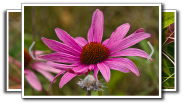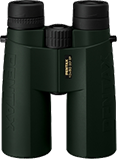western thatching ant
(Formica obscuripes)
Conservation • Description • Habitat • Ecology • Distribution • Taxonomy
|
|
||||||||||||||
Description |
Western thatching ant is a common, small, mound ant. It occurs in the United States from Washington State to northern California, east to Michigan, Northern Illinois, and Colorado. It occurs in southern Canada from British Columbia east to Manitoba, and in the Ontario Peninsula. It is found in a wide range of habitats, including on prairies, grasslands, and grasslands with shrubs (shrub-steppes), and in deciduous and coniferous forests. Nests are often found at the edges of open areas. Western thatching ants are omnivore predators. They prey on insects and other arthropods, they scavenge, and they harvest honeydew from aphids. Colonies can be huge. A single colony can have multiple nests and multiple queens, and it can contain up to 40,000 adult workers. Western thatching ants are “true” thatching ants. They build large mounds using only plant material, not soil. The mounds are built in open areas exposed to direct sunlight. They are typically 1″ to 19¾″ (2.5 to 50 cm) in height, but they can be much larger. Workers are ⅛″ to 5⁄16″ (4 to 7.5 mm) in length. There are three sizes of workers: minors, medias, and majors. Minors are small, majors are large, and medias are in between. On majors, the head and the front part of the body (mesosoma) are reddish, they are not greatly tinged brownish. The head is wider than long or as wide as long. When viewed from the front, the top of the head is flat or only slightly concave. There are two large compound eyes and three small simple eyes (ocelli). The ocelli are in a triangle on top of the head, and they are relatively large and obvious. The antennae have 12 segments. The first segment (scape) is very long, and it is covered with appressed hairs. It does not have any erect hairs except at the very tip, and it does not have any reclining, upward curved (decumbent) hairs. The plate on the face above the upper lip is called the clypeus. When viewed from the front, the middle part of the clypeus is not box-like. Where the “wings” of the clypeus descend, they form a shallow pit below the base of each antennal socket. The lower middle margin is smoothly rounded, not concave. Above the clypeus there is a pair of longitudinal ridges (frontal carinae) between the antennal sockets, and a small area between the frontal carinae (frontal triangle). The frontal triangle is shiny. The first body segment behind the head (mesosoma) has two distinct elevated areas (bumps). It is covered with three exoskeletal plates, the pronotum and mesonotum covering the thorax, and the propodeum covering the first segment of the abdomen that is fused to the thorax. The pronotum and mesonotum form one smooth convex bump, the propodeum a second convex bump. The erect hairs on the pronotum are fine, not thick. The rear-facing surface of the propodeum is the same length or shorter than the upper surface. The waist consists of a single segment (petiole) with a single raised bump (node). There is no postpetiole. When viewed from the side the petiole is sharp or blunt. When viewed from the rear, it is convex or angled upwards. The remainder of the abdomen (gaster) is bulbous and blackish brown to black. The head, mesosoma, legs, and the gaster are covered with silvery appressed hairs. There are single rows of erect hairs at the end of each segment. The legs are dark. The fourth segment (tibia) on the middle and hind legs has abundant hairs on all surfaces including erect hairs on the underside (flexor surface). Minors are entirely dark, and they have narrow heads. |
Size |
Worker: ⅛″ to 5⁄16″ (4 to 7.5 mm) Male: ⅜″ to 7⁄16″ (9 to 11 mm) Queen: ⅜″ to 7⁄16″ (10 to 11 mm) |
Similar Species |
Habitat |
Prairies, grasslands, shrub-steppes, deciduous forests, and coniferous forests |
Ecology |
Season |
|
Behavior |
|
Life Cycle |
|
Food |
Insects and other arthropods, aphid honeydew |
Distribution |
||
|
Sources 7, 24, 27, 29, 30, 80, 82, 83. Economo, Evan; Guénard, Benoit. "antmaps.org Formica obscuripes". antmaps.org. Okinawa Institute of Science and Technology. Retrieved 7 May 2025. |
|
| 5/7/2025 | ||
Occurrence |
||
Common |
||
Taxonomy |
|
Order |
Hymenoptera (ants, bees, wasps, and sawflies) |
Suborder |
Apocrita (narrow-waisted wasps, ants, and bees) |
Infraorder |
Aculeata (ants, bees, and stinging wasps) |
Superfamily |
Formicoidea (ants) |
Family |
|
Subfamily |
Formicinae |
Tribe |
Formicini |
Genus |
|
Complex |
integra group field and mound ants |
Species Complex |
|
Subordinate Taxa |
|
|
|
Synonyms |
|
|
|
Common Names |
|
western mound ant western thatching ant |
|
Glossary
Clypeus
On insects, a hardened plate on the face above the upper lip (labrum).
Gaster
The bulbous part of the abdomen of ants, bees, and wasps. In ants it usually begins at segment three.
Mesosoma
In Hymenoptera: the front part of the body, consisting of all three segments of the thorax and the first segment of the abdomen, to which the wings are attached.
Ocellus
Simple eye; an eye with a single lens. Plural: ocelli.
Pronotum
The exoskeletal plate on the upper side of the first segment of the thorax of an insect.
Propodeum
In Hymenoptera: the last segment of the thorax, anatomically the first segment of the abdomen.
Scape
In plants: An erect, leafless stalk growing from the rootstock and supporting a flower or a flower cluster. In insects: The basal segment of the antenna.
Visitor Photos |
||
Share your photo of this insect. |
||
This button not working for you? |
||
Dan W. Andree |
 |
I think maybe Carpenter Ants?... These ants had a little different color than I usually see. They were moving so fast and so many in a mound on the ground at Frenchmen’s Bluff SNA. Just thought I’d send this. |
MinnesotaSeasons.com Photos |
||
 |
 |
|
 |

Slideshows |
|

Visitor Videos |
||
Share your video of this insect. |
||
This button not working for you? |
||
|
Other Videos |
||
Mound-building Ant Colony (Formicidae: Formica obscuripes) on Forest Edge |
About
Jul 2, 2011 Photographed at the Rydell NWR, Minnesota (29 June 2011).Thank you to James Trager (@Bugguide.net) for identifying preserved specimens collected from this colony! |
Ants In Nature ep 1: Formica obscuripes and obscuriventris. |
About
Jul 21, 2023 Welcome to a possible new series to the channel! hopefully you gets enjoy it as much as I did making it! |

Visitor Sightings |
||
Report a sighting of this insect. |
||
This button not working for you? |
||
MinnesotaSeasons.com Sightings |
||

|
Created: 5/7/2025 Last Updated: © MinnesotaSeasons.com. All rights reserved. |

